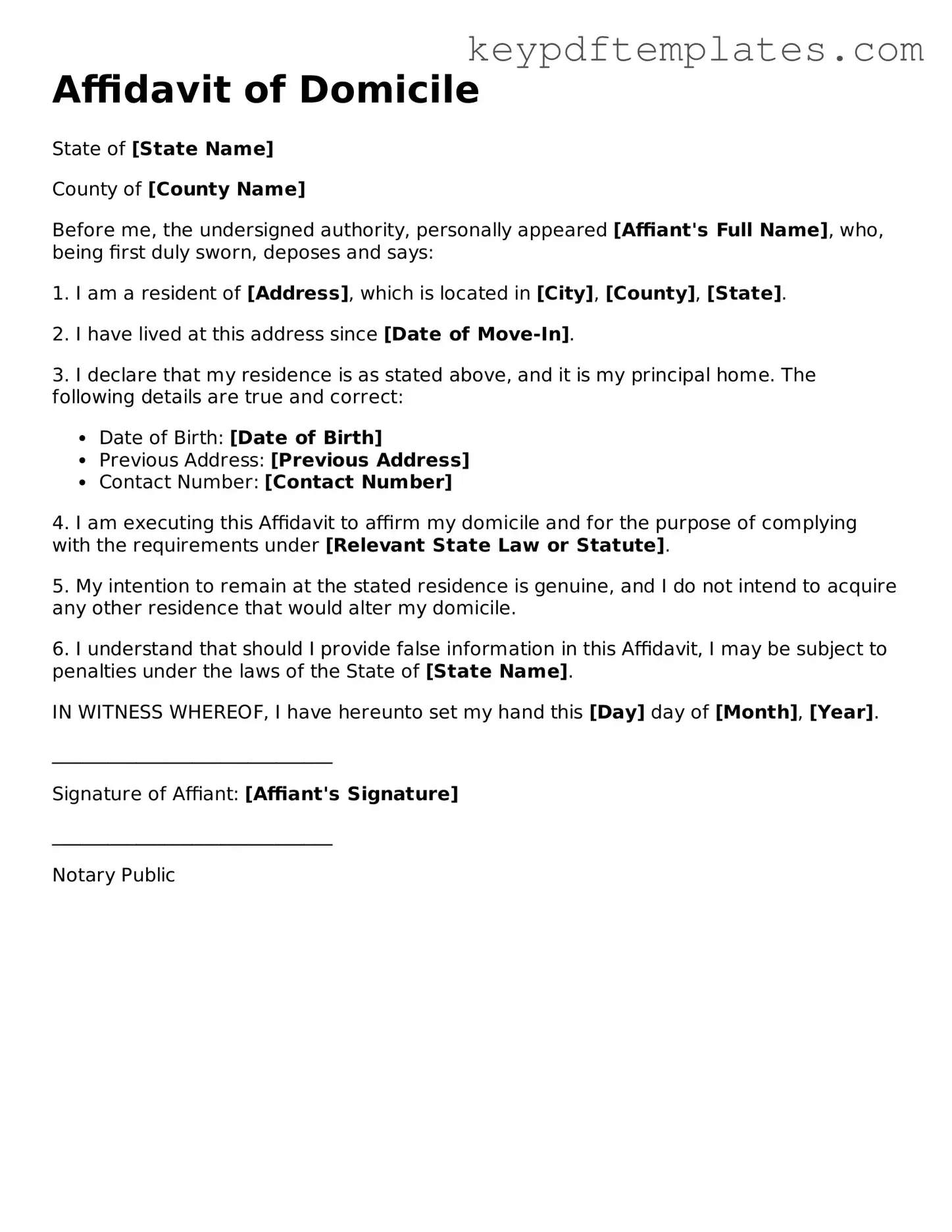Printable Affidavit of Domicile Template
The Affidavit of Domicile is a legal document that serves to confirm an individual's permanent residence, often required in situations involving the transfer of assets after a person's death. This form provides essential information about the decedent's last known address and helps establish the jurisdiction for probate proceedings. Understanding its purpose and proper usage is crucial for ensuring a smooth transition of estate matters.
Modify Document Online
